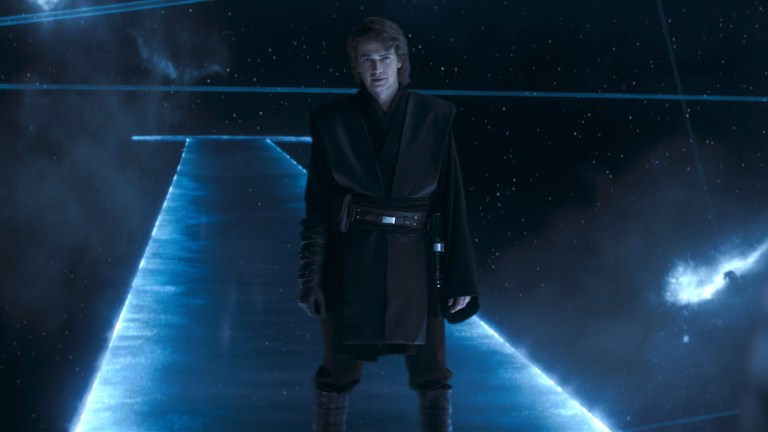Star Wars Needs to Solve Its Uncanny CGI Problem
Digitally resurrecting legacy characters is keeping Star Wars stuck in the past

This Star Wars: Ahsoka article contains spoilers.
Imagine you’re watching an emotional reunion between characters who haven’t seen each other in years. It’s a reunion you’ve been expecting, but nonetheless you still can’t believe it’s happening. However, as you try to connect with the characters and feel what they’re feeling in this moment, you’re distracted by yet another uncanny computer generated face on the body of a real life actor. This is the experience that many people, including myself, had watching episode 4 of Ahsoka and the reunion between Ahsoka and Anakin in the World Between Worlds.
Anticipation for the characters’ reunion has been building since Hayden Christensen’s return was first revealed. The last time that Ahsoka saw her former master was on the Sith planet of Malachor in Star Wars: Rebels, the two locked in a deadly duel. So to see Anakin as he once was rather than what he became is an important moment for these characters who shared a strong bond as master and apprentice. Ahsoka saw Anakin not only as a mentor, but as a brother. He was her family before she left the Jedi Order.
The decision to digitally de-age Hayden Christensen in this moment is baffling. I understand wanting to make him look more like he did in Revenge of the Sith, before he became Darth Vader, for continuity purposes, but in the World Between Worlds, does it really matter? It’s one thing to de-age him in a flashback scene like in Obi-Wan Kenobi – still looks strange but it’s a little more forgivable. But for a sequence that takes place outside of space and time, it shouldn’t really matter how old Anakin looks, especially since Darth Vader was close to Christensen’s actual age when he died in Return of the Jedi.
It’s even more baffling of a choice given that Christensen looks relatively normal in the Clone Wars flashbacks in episode 5 of Ahsoka and not like the uncanny replication we see in the World Between Worlds. Those scenes have a greater emotional impact because we are more easily able to see Christensen’s expressions even amongst the fog and other special effects in the sequence.
It’s not just Ahsoka that suffers from the overuse of this technology either. Star Wars as a whole has been misusing its legacy characters by using computer generated facsimiles rather than just recasting them in the New Republic era. Obviously, Mark Hamill can’t play the same Luke Skywalker he did in the original trilogy, but that doesn’t mean that digitally recreating his face and voice is the right move.
I know bringing up Star Trek in a Star Wars article is dangerous territory, but Strange New Worlds has been able to add to the franchise’s legacy in a meaningful way by recasting characters like Spock, James T. Kirk, Nurse Chapel, and Captain Pike rather than using a bunch of computer generated likenesses. Casting Vivien Lyra Blair as a young Leia in Obi-Wan Kenobi is one of the best things that Star Wars has done in a while because, like the actors in Strange New Worlds, we get to see her embody the character in her own way rather than watching a computer try to emulate a young Carrie Fisher.
Star Wars needs to stop being so precious with its legacy characters and trust that just because not everyone likes Solo doesn’t mean that uncanny deep fakes are the right way to keep these characters alive. In many cases, they’re already using actors that look like these characters to create these digital face replicas. Graham Hamilton, the actor used to replicate Luke in The Book of Boba Fett and The Mandalorian, already looks like a young Mark Hamill, and fans have been pushing for Sebastian Stan to step into the role for years. Billie Lourd, Carrie Fisher’s daughter, has already been used as a body double for a young Leia in The Rise of Skywalker, so if Leia were to make an appearance in the New Republic era as her brother has (Senator Organa has already been mentioned in Ahsoka), it would make sense for her to just play the role herself without her mother’s face added on in post.
Hiding an actors’ expressions underneath a computer generated replication does a disservice to their performance and to the audience watching them. It forces the audience to spend more time trying to figure out what’s real and what isn’t than on the scene taking place in front of them. Yes, Star Wars fans especially are used to CGI characters – it wouldn’t be a galaxy far, far away without some zany aliens thrown into the mix – but there’s a difference between using motion capture to generate an entirely new creature and digitally replicating reactions on a human actors’ face.
The reason that people love these characters so much is because of the heart that their actors have imbued them with. Technology has come a long way since Star Wars first began, but there will always be something off-putting about a digitally created human face trying to replicate the same emotions. Recasting characters isn’t a bad thing. Letting actors look their age, especially in a realm outside of time and space that we still don’t know a ton about, isn’t a bad thing.
When I’m watching Star Wars, I want to be able to focus on the emotional moments, action, and world building that make this franchise so great, not whether or not a person’s face is real. I don’t want to see the likeness of an actor from an older project resurrected digitally for nostalgia’s sake when there are plenty of talented actors that could take on the role. There is so much of this galaxy still left to explore, and yet Star Wars continues to be stuck in its own past.
